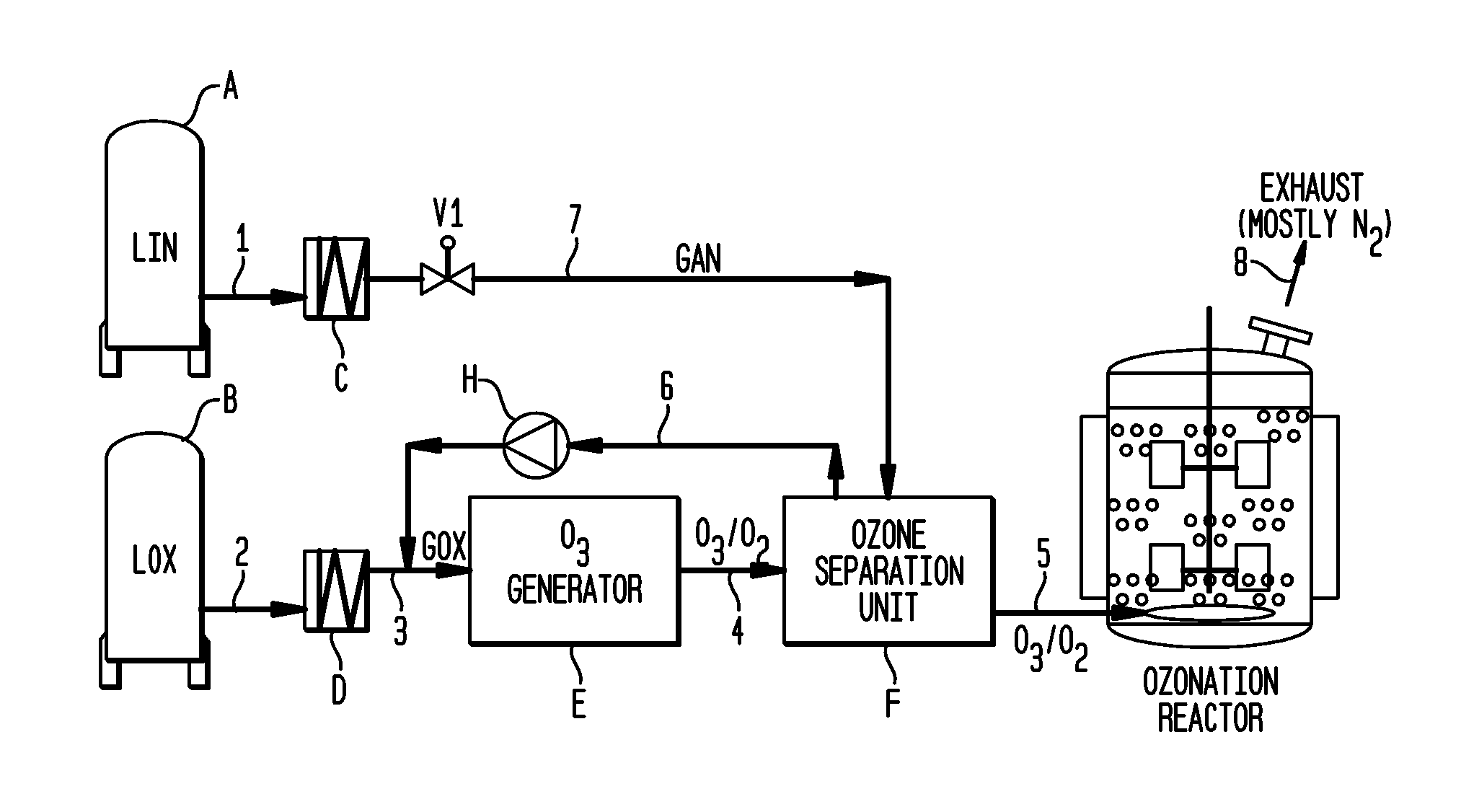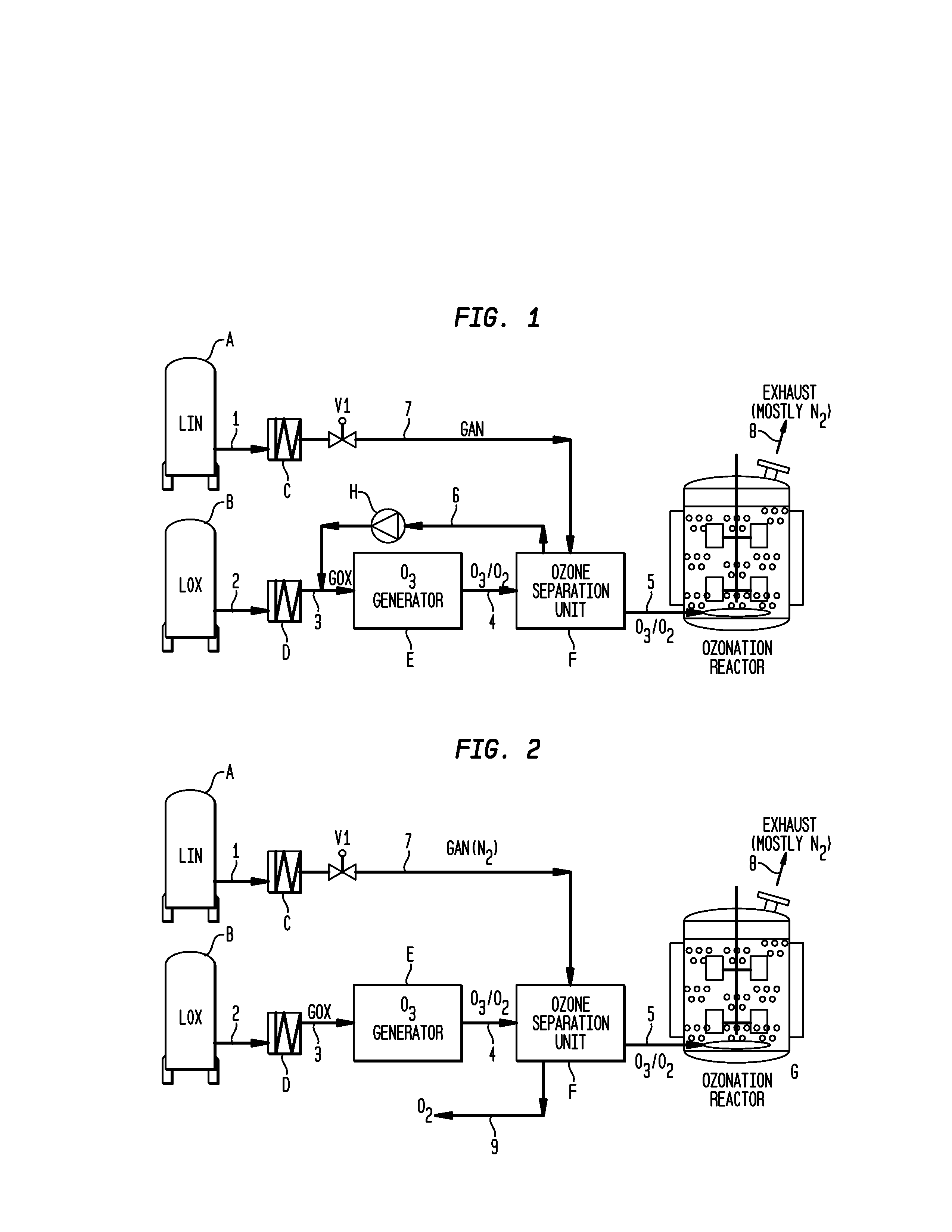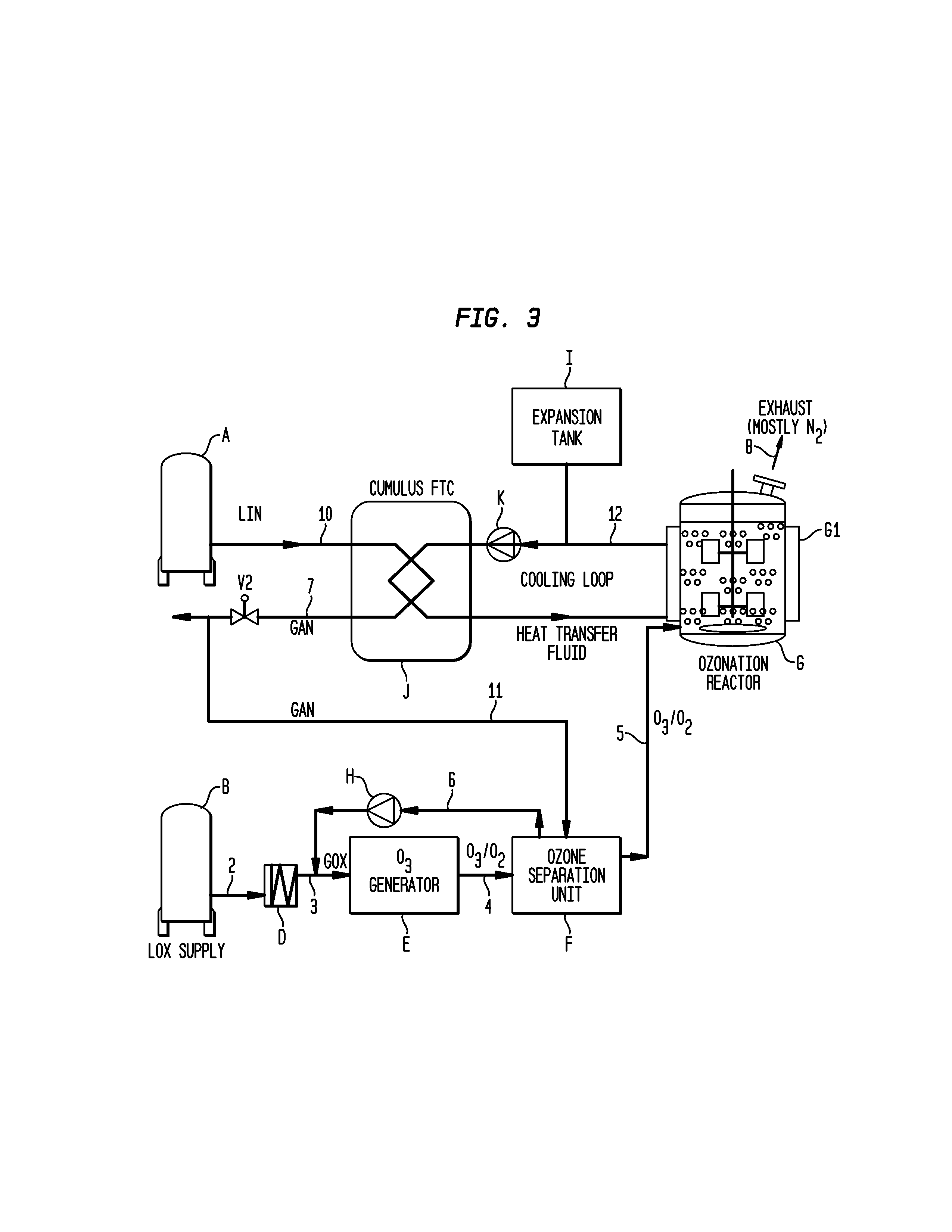Methods for the ozonolysis of organic compounds
- Summary
- Abstract
- Description
- Claims
- Application Information
AI Technical Summary
Benefits of technology
Problems solved by technology
Method used
Image
Examples
Embodiment Construction
[0026]Turning to FIG. 1, a schematic representation of a process according to the invention is presented. Ozone is produced for use in an ozonolysis reaction in an ozonation reactor. Liquid nitrogen is stored in storage tank A and fed through line 1 to a heat exchanger C. The liquid nitrogen will be warmed and enters the gaseous state in heat exchanger C. When valve V1 is opened, the gaseous nitrogen will be fed through line 7 into the ozone separation unit F.
[0027]Liquid oxygen is stored in storage tank B. Liquid oxygen is fed through line 2 to heat exchanger D where its temperature will be raised and it will become gaseous. The gaseous oxygen is fed through line 3 to an ozone generator E where it will be used to produce ozone. A mixture of oxygen and ozone will leave ozone generator E through line 4 to an ozone separation unit F. In this unit, ozone and oxygen are separated by conventional means such as an adsorption process or through membranes and the separated oxygen is fed bac...
PUM
| Property | Measurement | Unit |
|---|---|---|
| Pressure | aaaaa | aaaaa |
| Expansion enthalpy | aaaaa | aaaaa |
Abstract
Description
Claims
Application Information
 Login to View More
Login to View More - R&D
- Intellectual Property
- Life Sciences
- Materials
- Tech Scout
- Unparalleled Data Quality
- Higher Quality Content
- 60% Fewer Hallucinations
Browse by: Latest US Patents, China's latest patents, Technical Efficacy Thesaurus, Application Domain, Technology Topic, Popular Technical Reports.
© 2025 PatSnap. All rights reserved.Legal|Privacy policy|Modern Slavery Act Transparency Statement|Sitemap|About US| Contact US: help@patsnap.com



